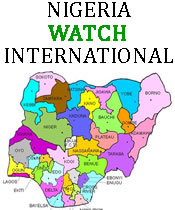- UN Environment Programme says investments Contribute towards US$30 billion goal pledged in Copenhagen
Fast-track climate funding for vulnerable mountain communities and low carbon development strategies was announced last week by the governments of Denmark and Germany and the UN Environment Programme (UNEP).
The projects underline the many forward-looking actions emerging across the globe that are fostering a transition to a low-carbon pathway.
Some of these have been showcased in UNEP's 30 Ways in 30 Days campaign launched in the runup to Cancun- from the expansion of geothermal electricity in Kenya to Bus Rapid Transit systems in Indonesia and coping with floods by simple building designs in Mozambique.
The 10 million Euros (over US$13 million) programme is expected to be funded by the German Ministry for the Environment, Nature Protection and Nuclear Safety and covers ecosystem-based adaptation in mountain regions.
It will involve around three pilot countries: Uganda in East Africa, Nepal in the Himalayas of Asia and Peru in the Andes of Latin America.
The programme, to be carried out by UNEP, the UN Development Programme (UNDP) and the International Union for Conservation of Nature (IUCN), will assess, for example, increased vulnerability among communities and farmers to droughts and floods linked with rising regional temperatures and the loss of glaciers and ice.
It will also address how to conserve and enhance mountain ecosystems in order to boost resilience to likely future climatic changes over the coming decades.
UNEP, UNDP and IUCN bring together the respective experiences and networks of the three organizations in the implementation of ecosystem-based adaptation projects. Ecosystem-based adaptation is a concept which seeks to create win-wins between adaptation measures and the conservation of biodiversity.
The German-financed programme is aimed at sparking off a larger fund for ecosystem-based adaptation measures in developing countries.
It is the intention of UNEP, UNDP and IUCN to use the lessons learnt to engage more donors and partner countries in 2011 in order to address further ecosystems such as coastal zones, river basins and wetlands while exploring new financing mechanisms such as payments for ecosystem-services that bolster adaptation






